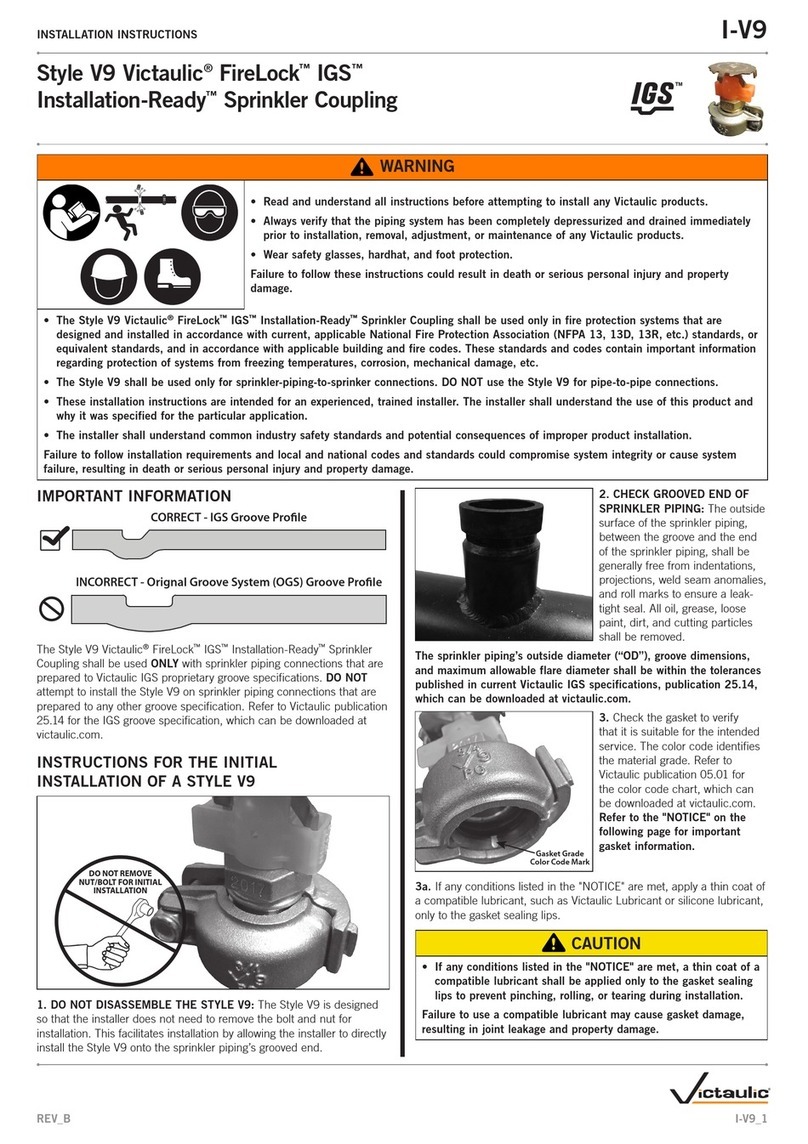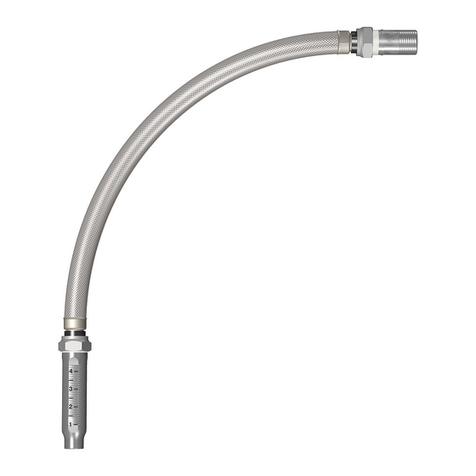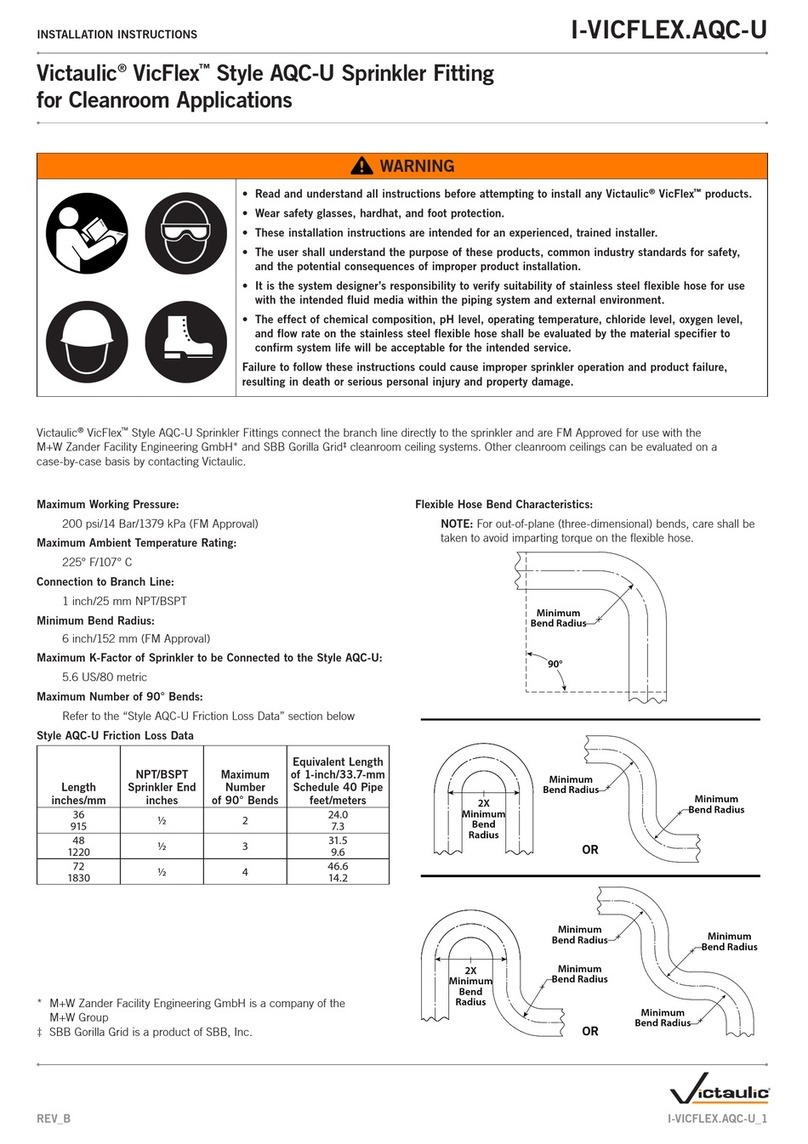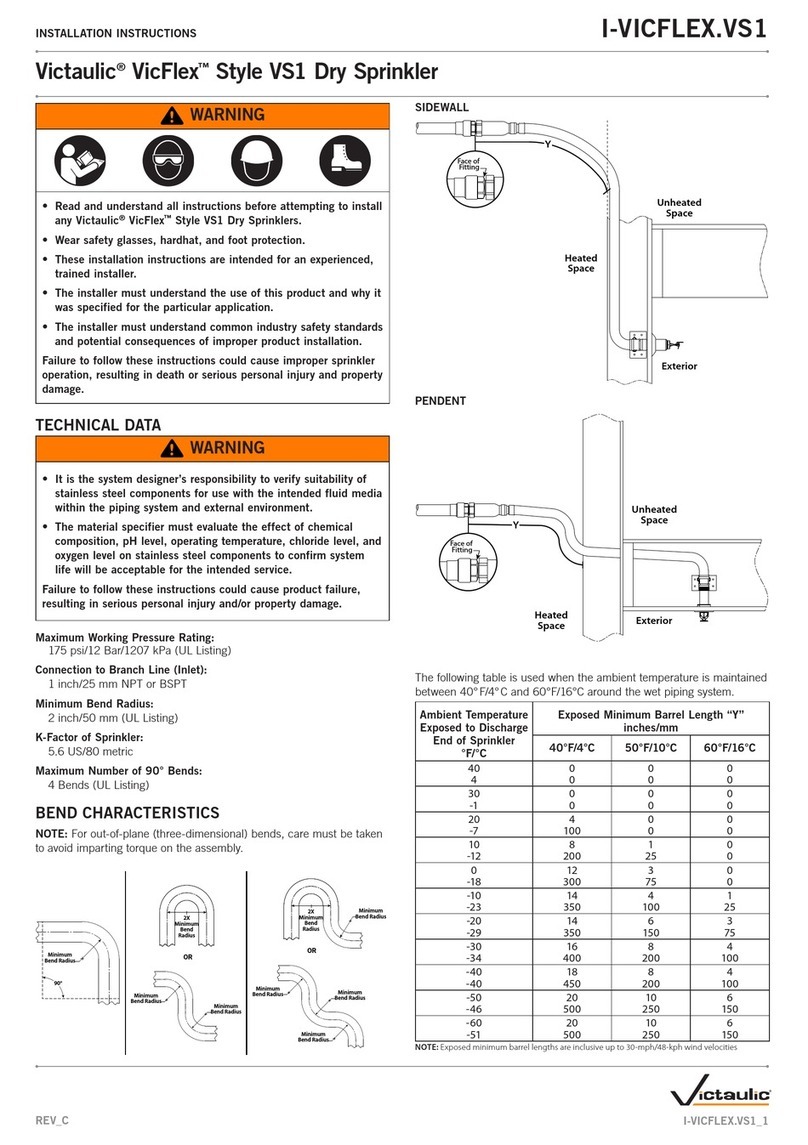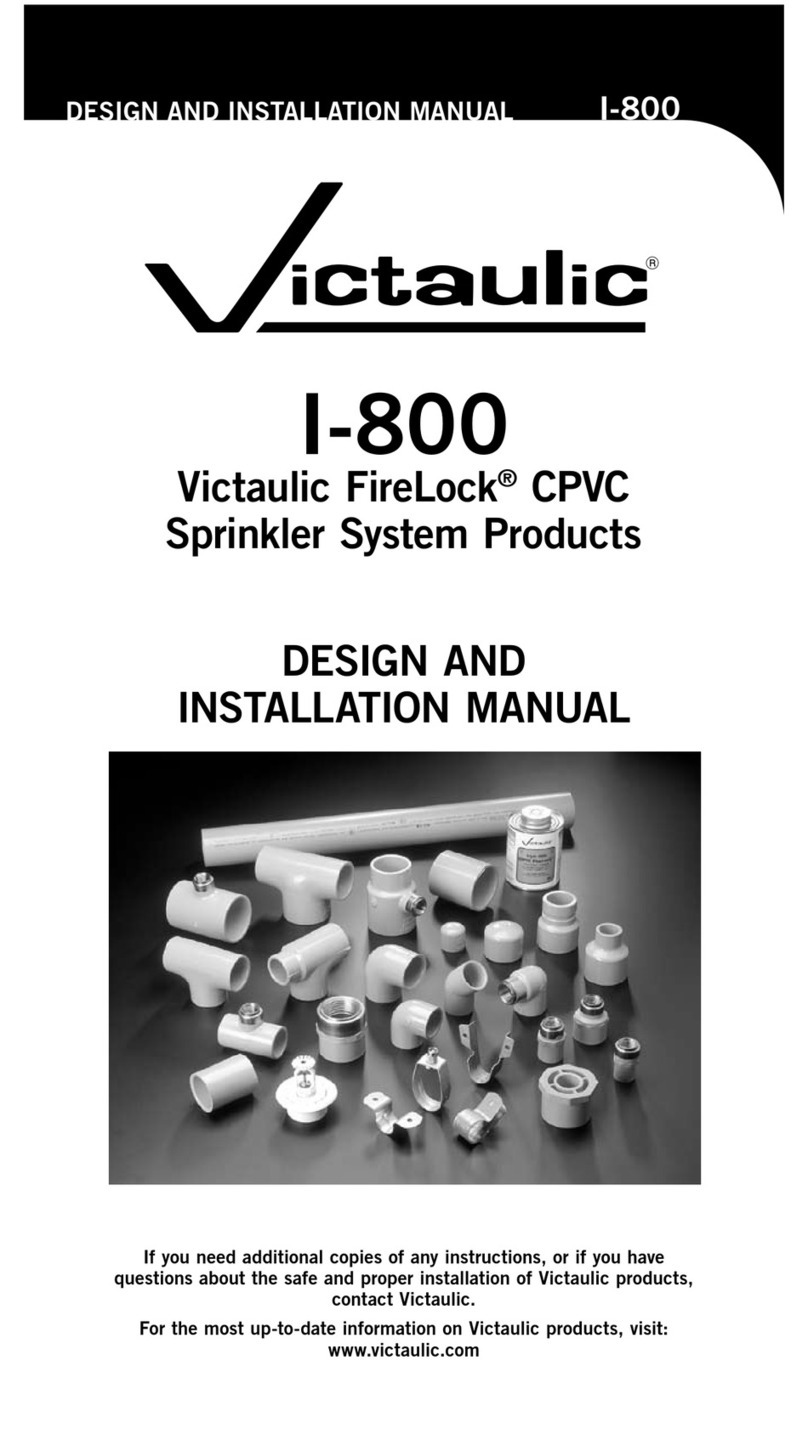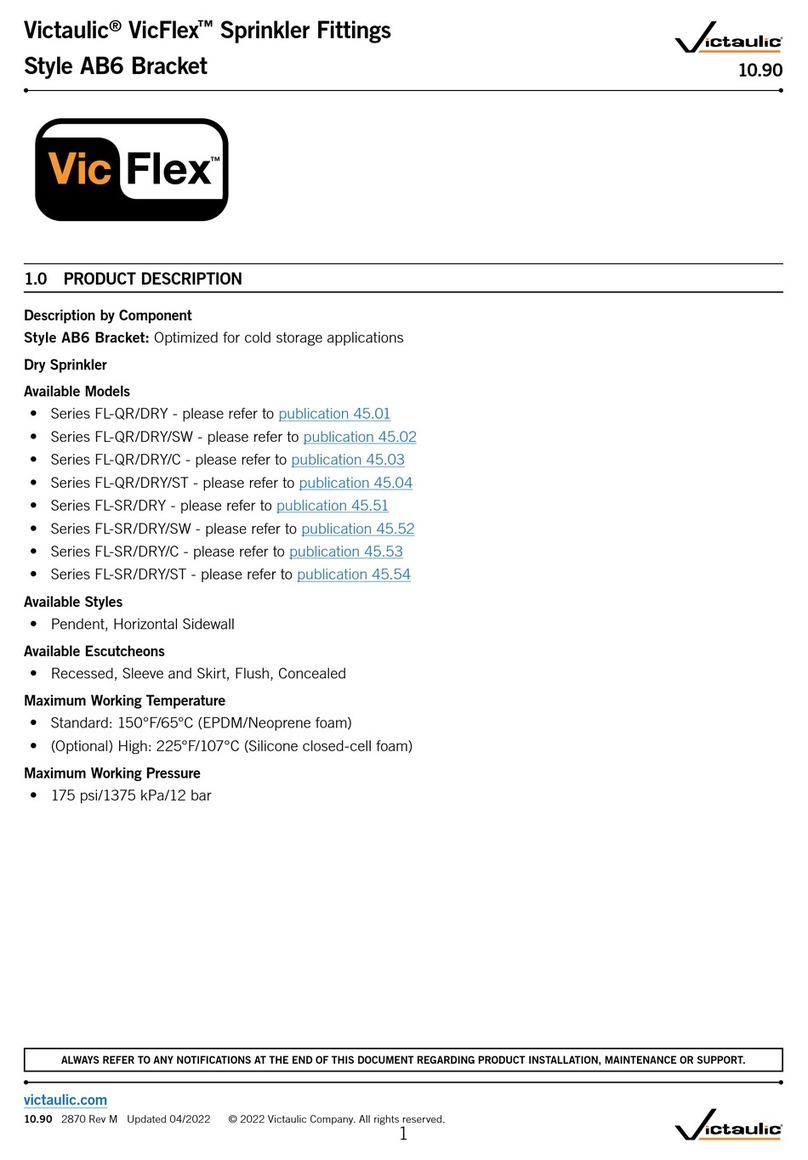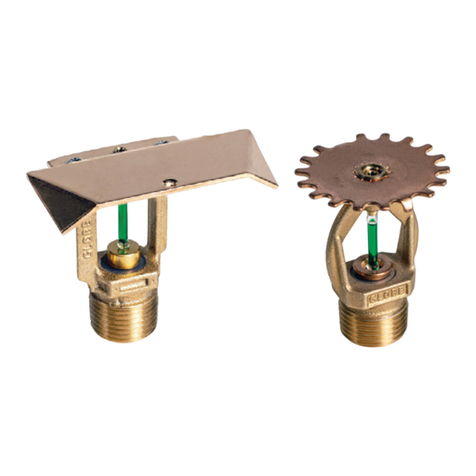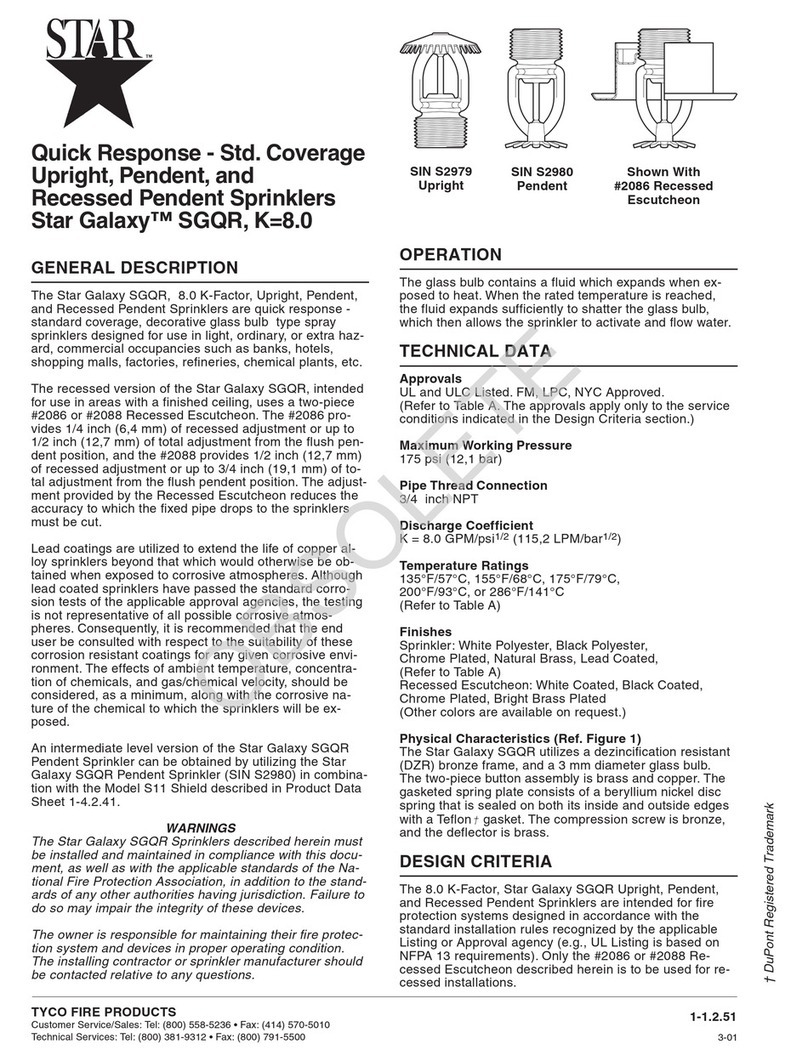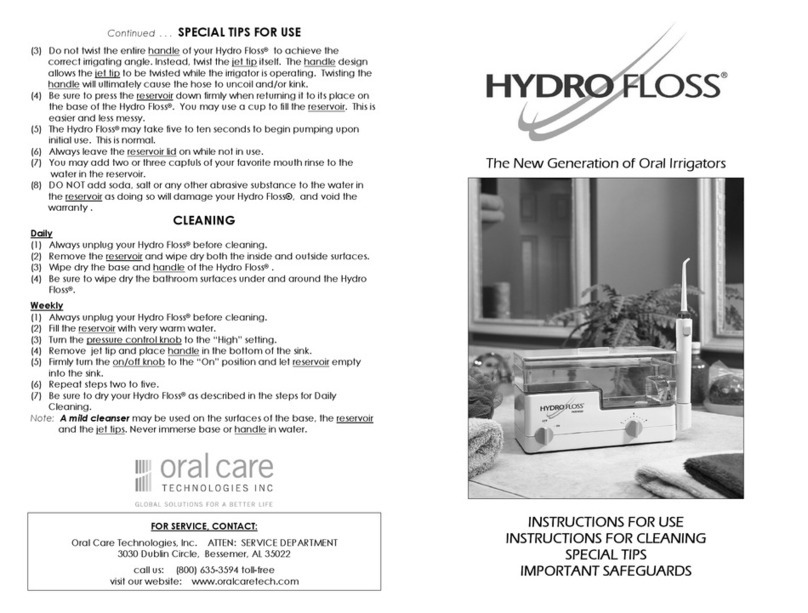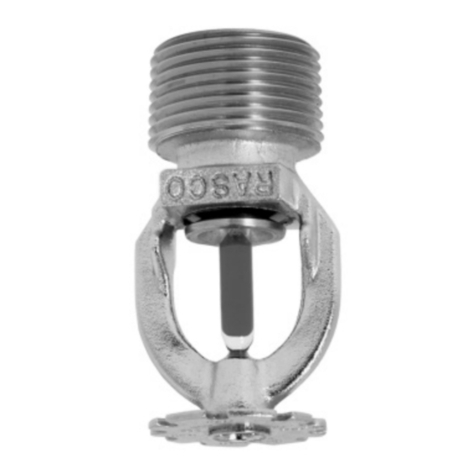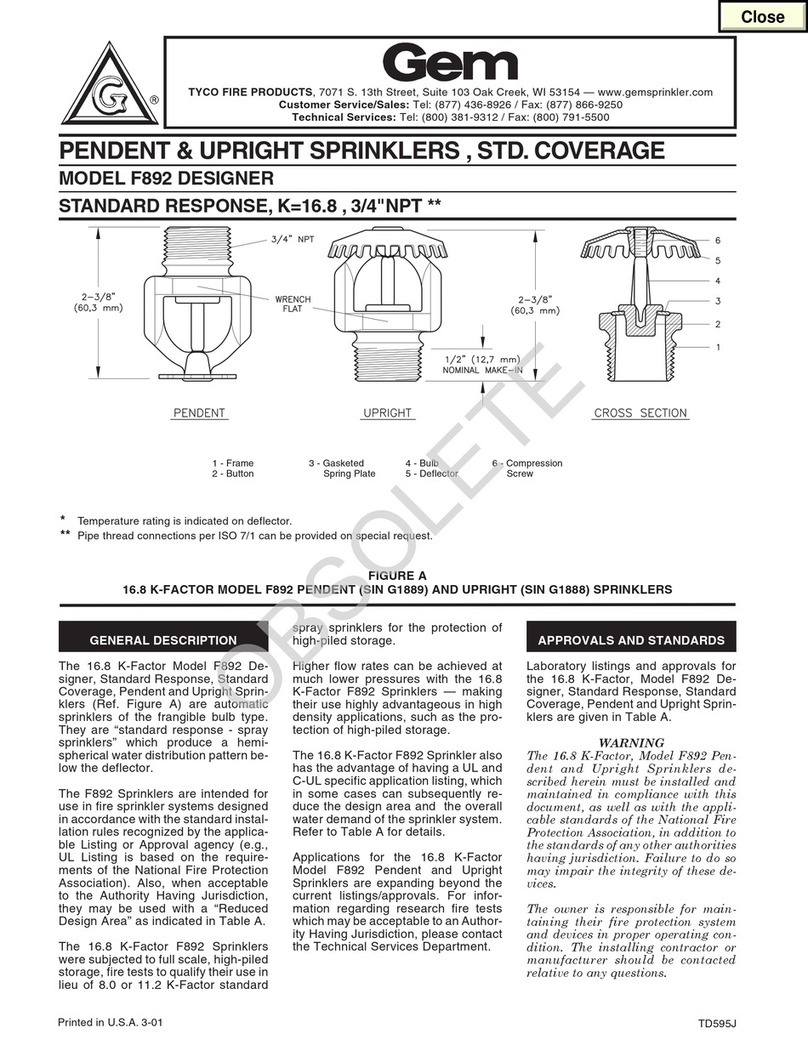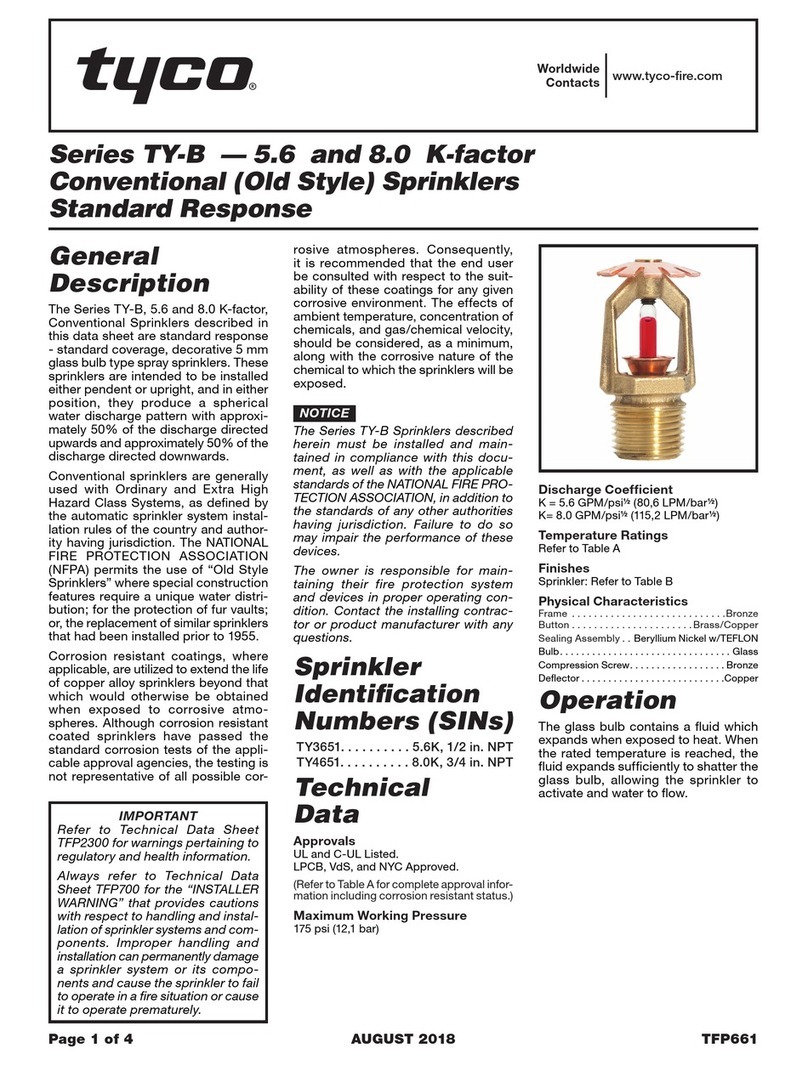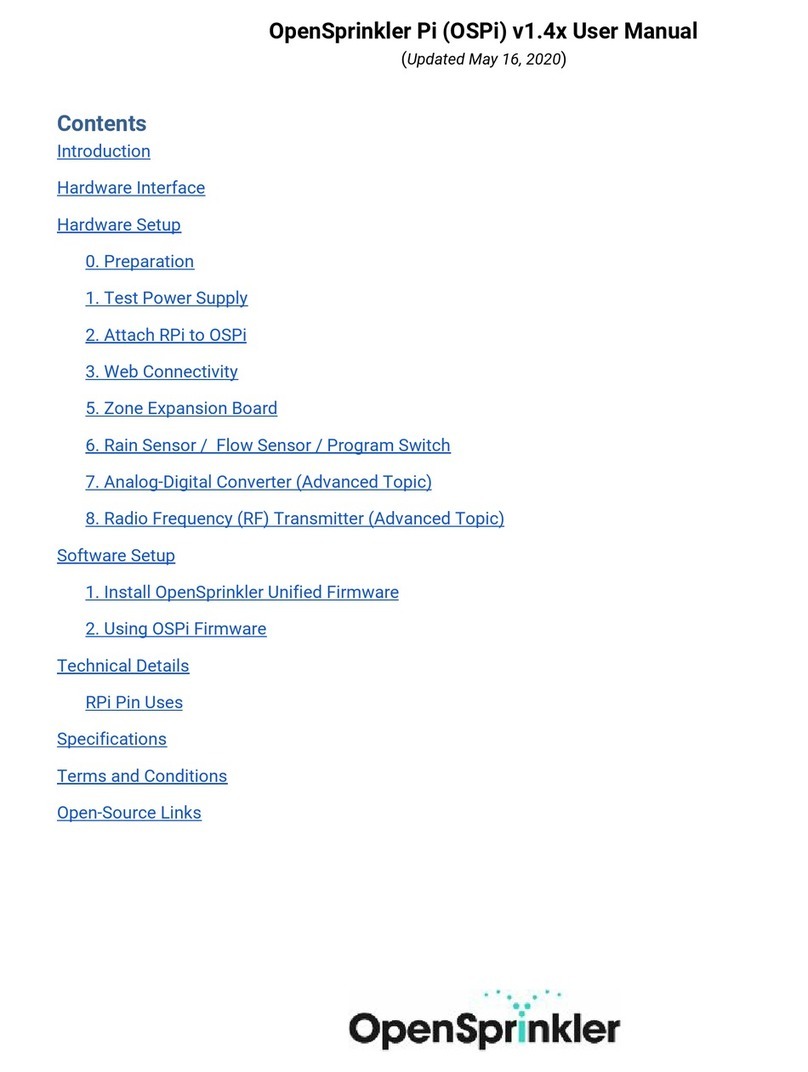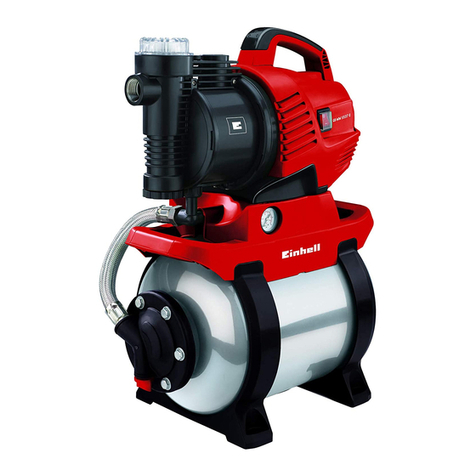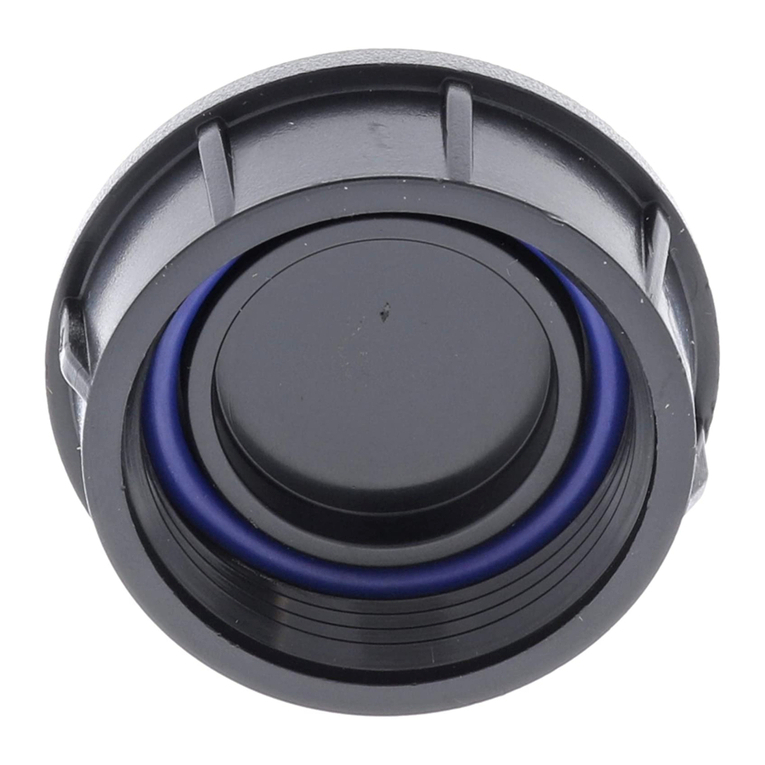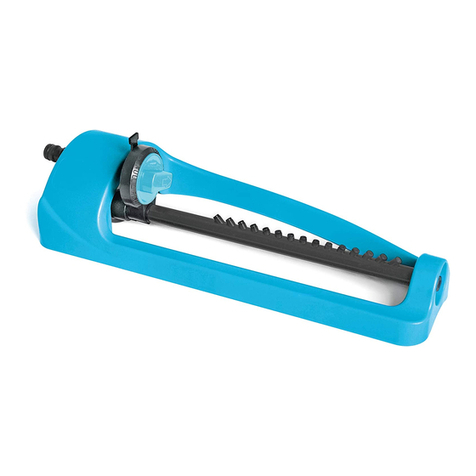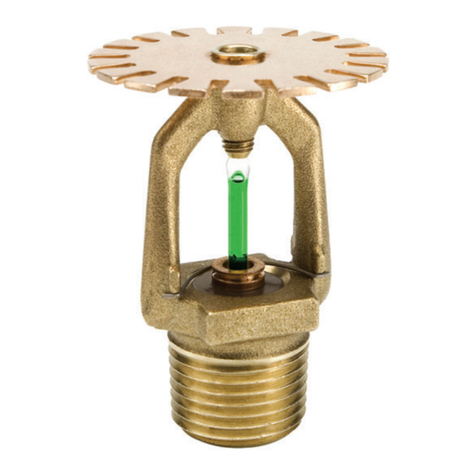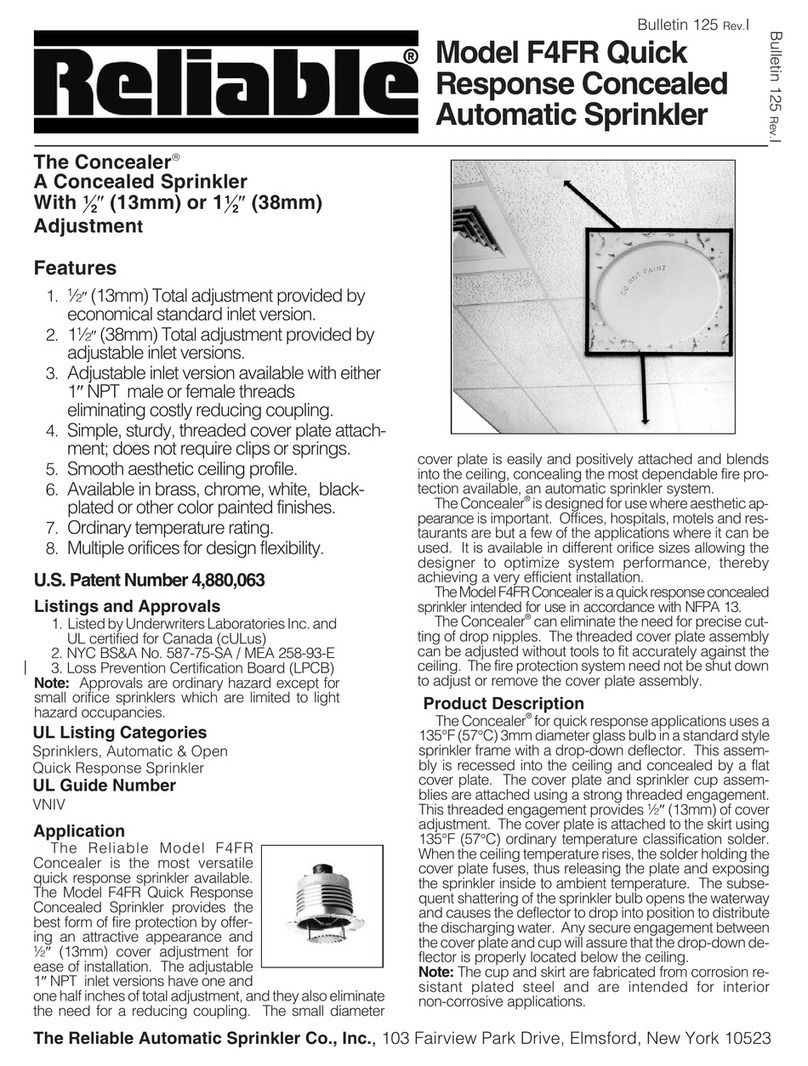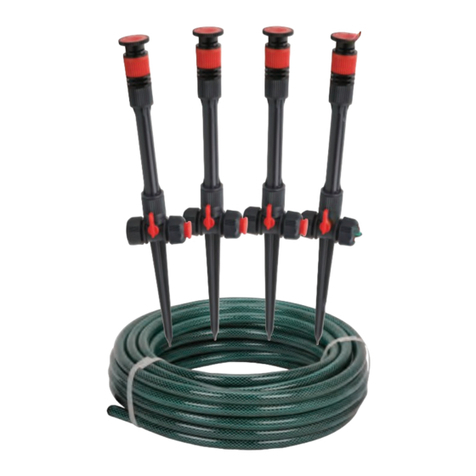
46.03 16398 Rev BUpdated 04/2021 © 2021 Victaulic Company. All rights reserved.
victaulic.com
5.0 PERFORMANCE
Sprinkler Selection
Identify Areas of the Attic
• Identify each space in your attic as a Gable area,
a Hip area or a Single Slope area. Refer to Figure
1 and Figure 5 through Figure 8 to choose the
appropriate use of sprinklers for your application.
Gable/Peak and Eave Areas
• The areas in which the Model FL-SA/BB can be
used are areas of the attic space where the roof
joists/ trusses run perpendicular to the ridgeline. In
the areas where the structure is perpendicular to
the ridgeline and the attic span is in both directions
of the ridgeline the Model FL-SA/BB shall be used.
In each of the areas being protected with the Model
FL-SA/BB sprinklers, identify the pitch/slope of the
roof in that area. Ensure that the correct Model
FL-SA/BB is chosen from the Table 1 based on the
pitch/slope.
• The span must be identified in the area being
protected by the Model FL-SA/BB. If the total span
of the attic is over 60 ft, a row of Model FL-SA/
GAP sprinklers must be located near the eave in
accordance with Figure 5 Option 2 and the layout
rules must be in accordance with Figure 9 and
Figure 10.
Single Slope Areas
• Single Slope areas are similar to the Gable/ Peak
areas, except a vertical wall or obstruction impeade
the flow of hot gasses to the apex or is located
directly at the apex of the attic space. When the hot
gasses hit a vertical obstruction the gasses keep
much of their velocity and tend to travel along the
ridgeline. In a true gable with an apex and sloped
ceiling on both sides, the hot gasses tend to run up
one side of the gable roof and partly down the other
section. This decreases the velocity of the gasses
running along the gable section. Ensure the spacing
rules are followed in accordance with Figure 11.
Under-Hip Areas
• With Hip areas the important features to identify in
the under-hip areas are the structurial members. It
is important to identify if the structural members run
parallel to the slope or perpendicular to the slope
("Step Down" trusses). If the structural members
run parallel to the slope, use Figure 13 or Figure 14.
If the structural members are "Step Down" trusses
framed into "Jack" trusses use Figure 12.
Adjacent-Hip Areas
• In the Ajdacent-HIP areas, either the Model FL-SA/
GAP or the Model FL-SA/DS sprinklers can be used.
If using Model FL-SA/DS refer to Figure 15 and if
using Model FL-SA/GAP refer to Figure 16.
TABLE 1: SPRINKLER SELECTION CRITERIA
SPRINKLER MODEL SIN AREA OF USE K FACTOR SPAN ROOF PITCH
BB46 V8122 RIDGE/GABLE 8 MAX 60 ft 4:12 to less than 7:12
BB46/GAP V8122/ V5623 RIDGE/GABLE and at EAVE 8.0/5.6 MAX 84 ft 4:12 to less than 7:12
BB79 V8123 RIDGE/GABLE 8 MAX 60 ft 7:12 to less than 10:12
BB79/GAP V8123/ V5623 RIDGE/GABLE and at EAVE 8.0/5.6 MAX 84 ft 7:12 to less than 10:12
BB1012 V8124 RIDGE/GABLE 8 MAX 60 ft 10:12 to 12:12
BB1012/GAP V8124/ V5623 RIDGE/GABLE and at EAVE 8.0/5.6 MAX 84 ft 10:12 to 12:12
GAP V5623 EAVE/HIP 5.6 NA SEE LAYOUT CRITERIA
DS V5621 HIP/SINGLE SLOPE 5.6 NA SEE LAYOUT CRITERIA
FIGURE 4A FIGURE 4B
FIGURE 4: SPAN MEASUREMENT/SPRINKLER
SPACING LOCATIONS
3
victaulic.com
